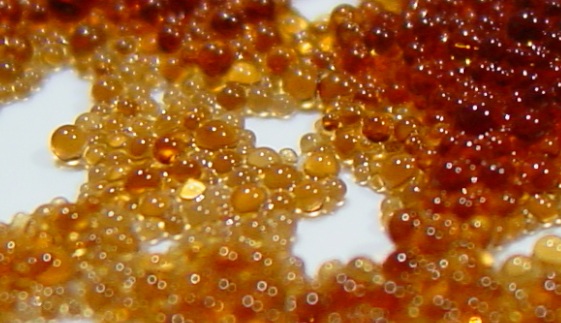How to Flush Water Softener Resin Out of Pipes

Did your water softener start clogging the pipes in your home?
Are you noticing yellow beads appearing in your plumbing systems, in your toilet, sink, bathtubs, etc. ? Well, do not be too alarmed, those yellow beads are not toxic, but they do clog up the smaller passages in fixtures and appliances. You should get your plumbing work inspected to have all of these resin beads thoroughly flushed out of your plumbing system.
Water Softener Resin Beads in Pipes – How Did This Happen?
A water softener has resin beads inside the brine tank that work to soften the water. The beads are periodically cleaned using the salt every few weeks. The salt is held in the softener’s salt holding tank. The water softener will regenerate and clean these beads at night.
If the membrane that holds the resin beads were to break, the beads are then free to travel throughout your plumbing system. A common telltale sign that the membrane has broken is low water pressure, and one of the common culprits for low water pressure is the water softener.
If you have determined that your water softener is the cause for your low water pressure and it backwashing resin into your piping, then proceed to put your softener into “bypass” mode. Putting a water softener into bypass mode varies by manufacturer but frequently it involves turning a valve off or pushing a valve in. Bypass mode makes it, so the water no longer goes through your softener and preventing any additional beads to move through your plumbing.
Make sure not to run any water while you are resolving the problem with your water softener, especially hot water. The reason why is because you will risk leaking beads into your water heater. It will be another task altogether to drain the resin beads from your water heater, so prevent this from happening by not using any hot water during this cleansing process.
Benjamin Franklin Plumbing can repair your water softener and flush out the resin from your plumbing pipes. The process of removing this resin will be outlined in this post; we will share our expertise with you so that you may understand the professionals handle issues like a leaking water softener.
How to Flush Resin Beads From the Plumbing
- Close the valves to the water softener and open the bypass valve.
- Drain and flush your water heater – Fragmented resins can damage water heaters and plumbing fixtures.
- Remove all screens on your faucet – Resins break down over time and get into the water line clogging showerheads and faucet screens.
- Open the cold water valves throughout your home to flush the system out
- Flush and clean the water supply from the washer
- Run the dishwasher
- Run the washing machine
- Run the bathroom and kitchen sinks
- Run any and all water using appliances
Check to see if resin can still be found when you run the water.
If the appliances are clogged after running or start to overfull, then go ahead and turn them off. Detach their water hoses and check for clogs. Flush hoses to clear of beads. Check the connections and remove any beads clogging them. Reattach and run the appliances again to flush.
Check the warranty of your water softener and determine if the failure is covered. You will need to replace the entire water softener if it has started to leak. If the problem is not too severe, then an experienced plumber can replace the resin in your water softener for you.
A friendly Benjamin Franklin plumber can clean and refill your resin, or install a new resin tank depending on each situation and how damaged the water softener is. Our plumbers will also help with services like a water softener resin beads disposal.

